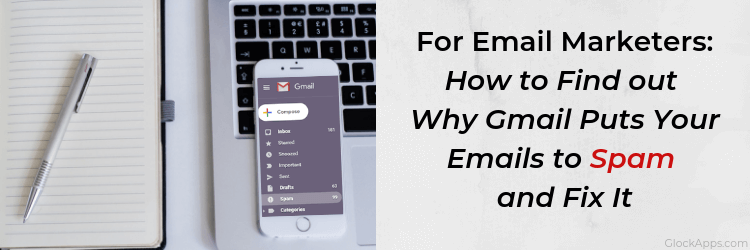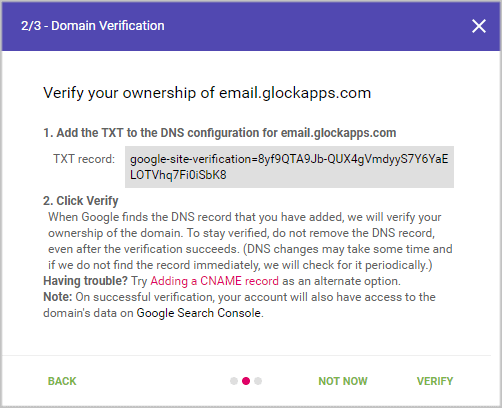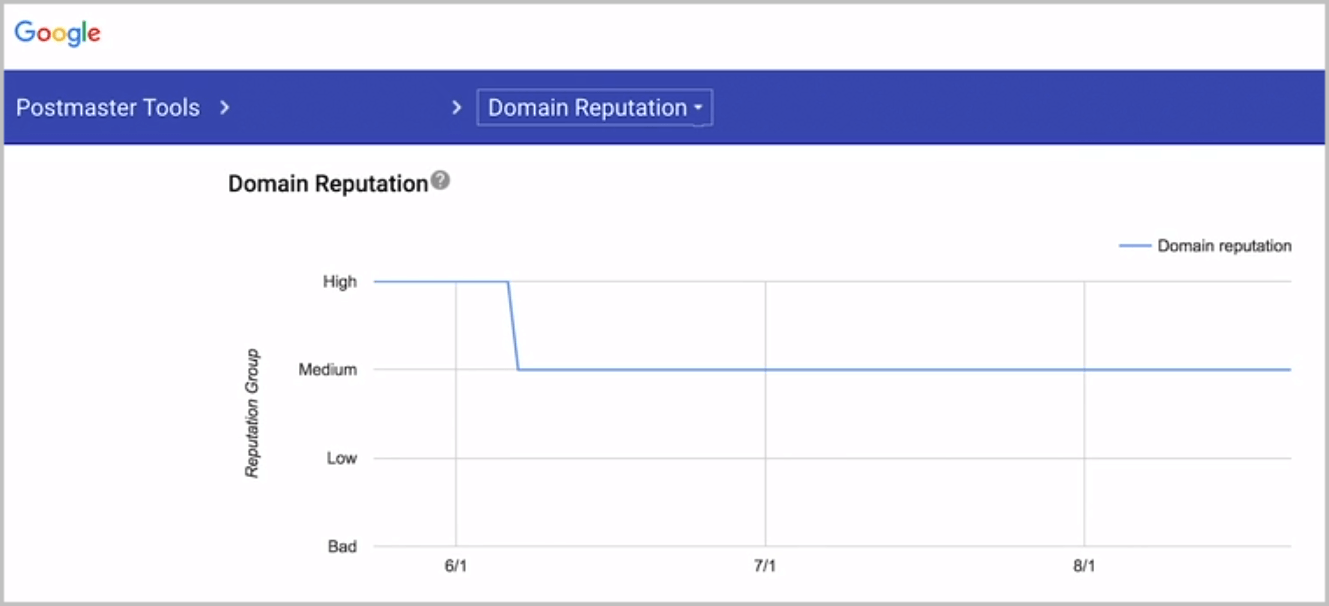Gmail Puts Emails in Spam. How Can I Fix It?
With 1.5 billion users around the world, Gmail takes a huge share of the global email market. There are hardly any email marketers who do not have email subscribers who use Gmail.
The question of email deliverability to Gmail recipients is becoming more and more urgent for email marketers. Like other mailbox providers, Gmail doesn’t disclose how they filter the emails. Gmail does not even provide a traditional feedback loop service that could help you track user complaints.
The good news is that they have Google Postmaster Tools that provide a good set of data about your sender domain and IP address. That data can help you understand your sender reputation with Google which is one of the major factors that affect your deliverability.
Note that most of the Postmaster Tools dashboards will display data only when there is a sizable daily volume of email traffic (up to the order of hundreds) coming from your authenticated domain. In addition, the Spam Rate and Feedback Loop dashboards need your emails to be signed by DKIM in order to show data.
To access the Postmaster Tools data, you must add and verify your domain to show that you have the ownership of the domain.
You can verify the domain by adding a DNS TXT record or by adding a CNAME record as an alternate option.
Once you verified your domain, you get access to different dashboards.
Your first step is to look at the IP reputation over the full 120 days. The IP Reputation report is useful when you send emails from dedicated IP addresses where other senders don’t impact the reputation of the IP. If the IP Reputation went down from high to low or bad, then there is something to think about.
When you send emails from shared IP addresses, you don’t have full control over the IP reputation. If you are a big volume sender, you can think about switching to a dedicated IP.
Your next step is to look at the domain’s reputation and note any dates where the reputation changed, and to what degree.
If the domain reputation went down, try to identify the probable causes of the change. These two are the most common:
– user complaints;
– insufficient user engagement.
If you have a high spam complaint rate with Gmail, this is likely to be the root of any deliverability problems, because spam/abuse complaints submitted by email recipients are the primary significative the spam filtering system relies on.
Open the Spam Rate graph in a new tab in the browser and correlate the data. Look at the dates when the reputation changed and look at what the complaint rate was at that time.
Email senders repeatedly having the complaint rate at or above 0.5% are going to have deliverability problems.
If you discover user complaints cause the issue, you’ll want to identify the source of the complaints. To do it, look at the spam/abuse complaints coming from other mailbox providers (Hotmail, Outlook, Yahoo, AOL, and local ISPs where you can get that data).
Notice common things:
1. Do complaints go from the same list source?
If there is a correlation to a particular email list, check the list acquisition source, send a re-subscription email and continue sending emails to those people who re-subscribes.
If you collect email subscribers through an opt-in form, make sure you use a confirmed opt-in process to prevent unwanted subscriptions.
2. Do complaints go for the same email campaign?
If there is a correlation to a particular email campaign, look at what could be causing it. Did you change the sender’s name or email address? Did you send the email when they did not expect it? Did you send irrelevant content?
3. When was the last message delivered to the user before they sent a complaint?
If you haven’t sent emails to them for months which is unusual for you, they might forget about their subscription.
4. When was the last time when the user opened any of your emails?
If they haven’t shown engagement during the last 6 months, they might be not interested in your emails anymore. You can send a re-engagement campaign to them and if they don’t respond, they should be removed from your active mailing list.
If the complaint rate is 0.0% across the last 30-120 days but your domain reputation is bad, it most likely means that a lot of your emails are not opened by the users and are not interacted with.
Gmail puts an extreme emphasis on user engagement as the indicator of whether or not the email is wanted. If a user doesn’t interact with the messages received from a particular sender, they’ll put an increasing number of emails sent by that sender into spam, teaching the filter you should be there.
At GlockApps, you can test your messages with two categories of Gmail email addresses: interactive and non-interactive.
The “non-interactive” category includes Gmail email addresses where GlockApps does not mark the received messages as ‘seen’. This group of test email addresses is useful when you send a cold email to new Gmail subscribers who have not interacted with your emails before.
The “interactive” category includes Gmail email addresses where GlockApps marks received messages as ‘seen’. This group of email addresses helps test email deliverability with Gmail if your Gmail recipients have already interacted with your messages and showed a sort of positive engagement.
Ideally, your message should go to Inbox with both groups of addresses. It would mean that your sender reputation with Gmail is very good. When the sender reputation is at the average or low level, Gmail looks at user engagement. And without prior user engagement, Gmail is likely to send the message to the Spam folder with non-interactive Gmail addresses.
Because of the importance of user engagement, the spam test may not always show the real picture of your email placement with Gmail. It is recommended to look at your email tracking statistics and notice your email open rate with Gmail recipients if you have access to such data. If the open rate has not dropped, then you are likely not having any deliverability issues with Gmail.
If your email open rate has dropped, notice when it happened and try to find out the possible causes analyzing the data in Google Postmaster Tools.
Sometimes, Google Postmaster Tools can show that your sender reputation is good, yet Google puts your emails to Spam. In this situation, you may continue sending emails as you used to and just wait. The issue may be solved on itself after a couple of weeks. Google can change your email placement from Spam to Inbox. But you don’t want to increase the number of sent emails during this period.
If the situation doesn’t change, you’ll want to segment your list and keep sending to the most engaged Gmail users only, i.e. to those who opened at least one message from you during the last 30 days. Positive user engagement should show Gmail that your emails are wanted and should be delivered to the Inbox.
Getting a new domain and IP is recommended when nothing else helps. You’ll want to warm up the new IP and domain with starting by sending 1000 emails and increasing by 10% everyday. Again, send to “hot” users during the warm-up period to get as many opens, clicks and replies as possible.
Read more: How to Find out What’s Causing the Spam Folder Placement
GlockApps Spam Testing for Marketers and Agencies

Test your email placement
Scan your emails through all the major spam filters before you send them.
Improve your deliverability
Get actionable tips for improving the delivery rate of every email you send.
Increase your revenue
Improve your overall email performance by delivering more emails to the inbox.







